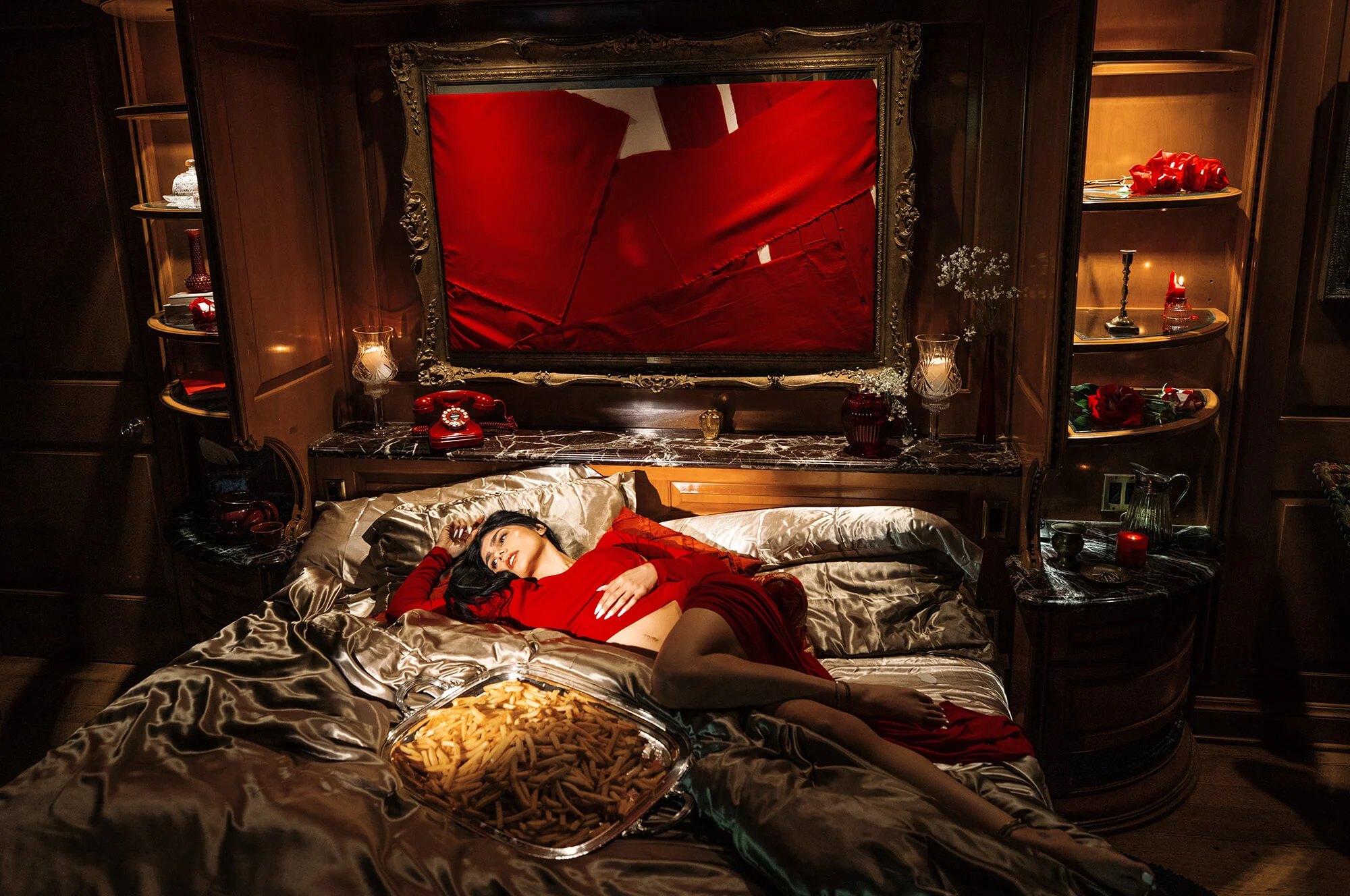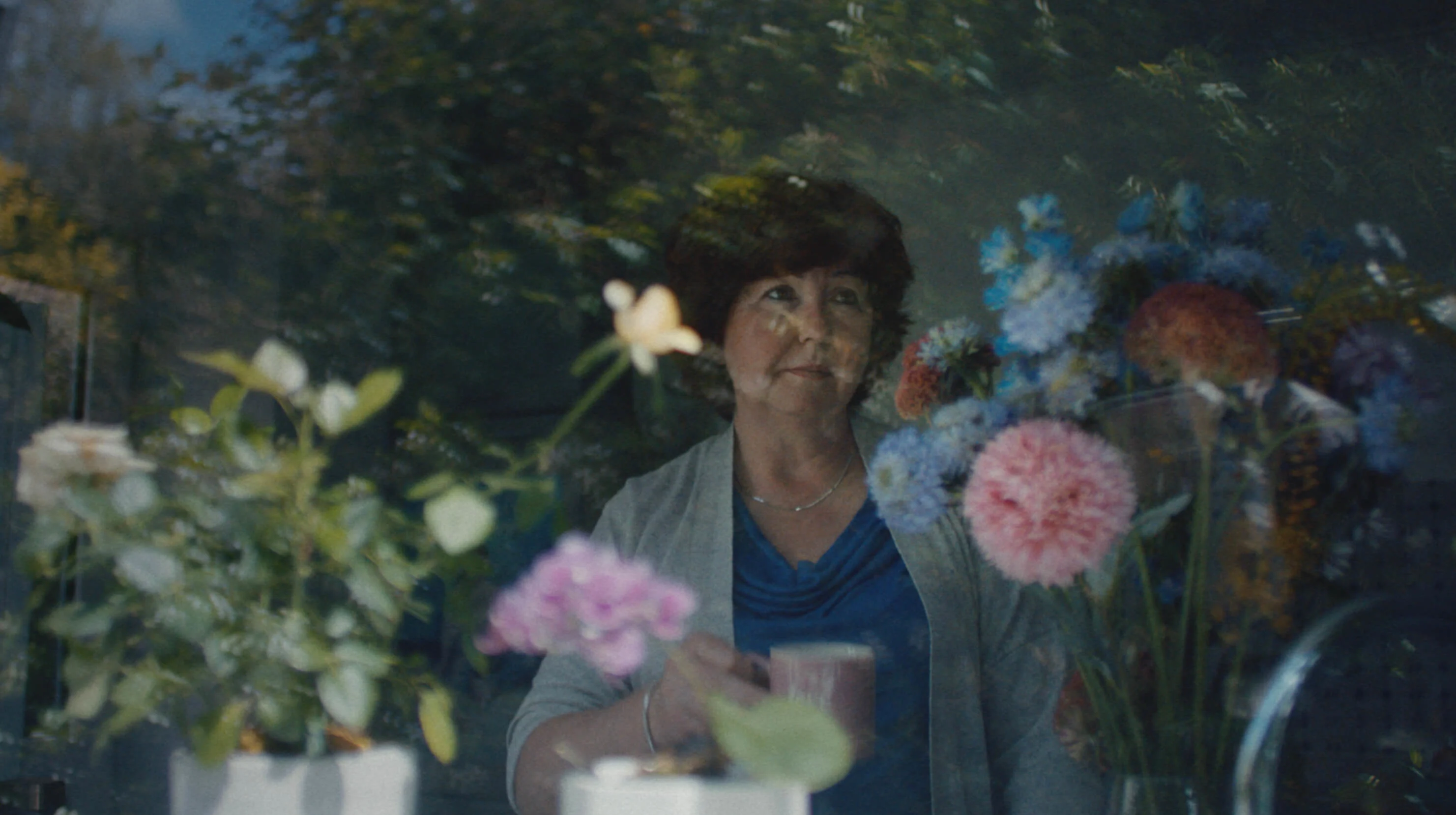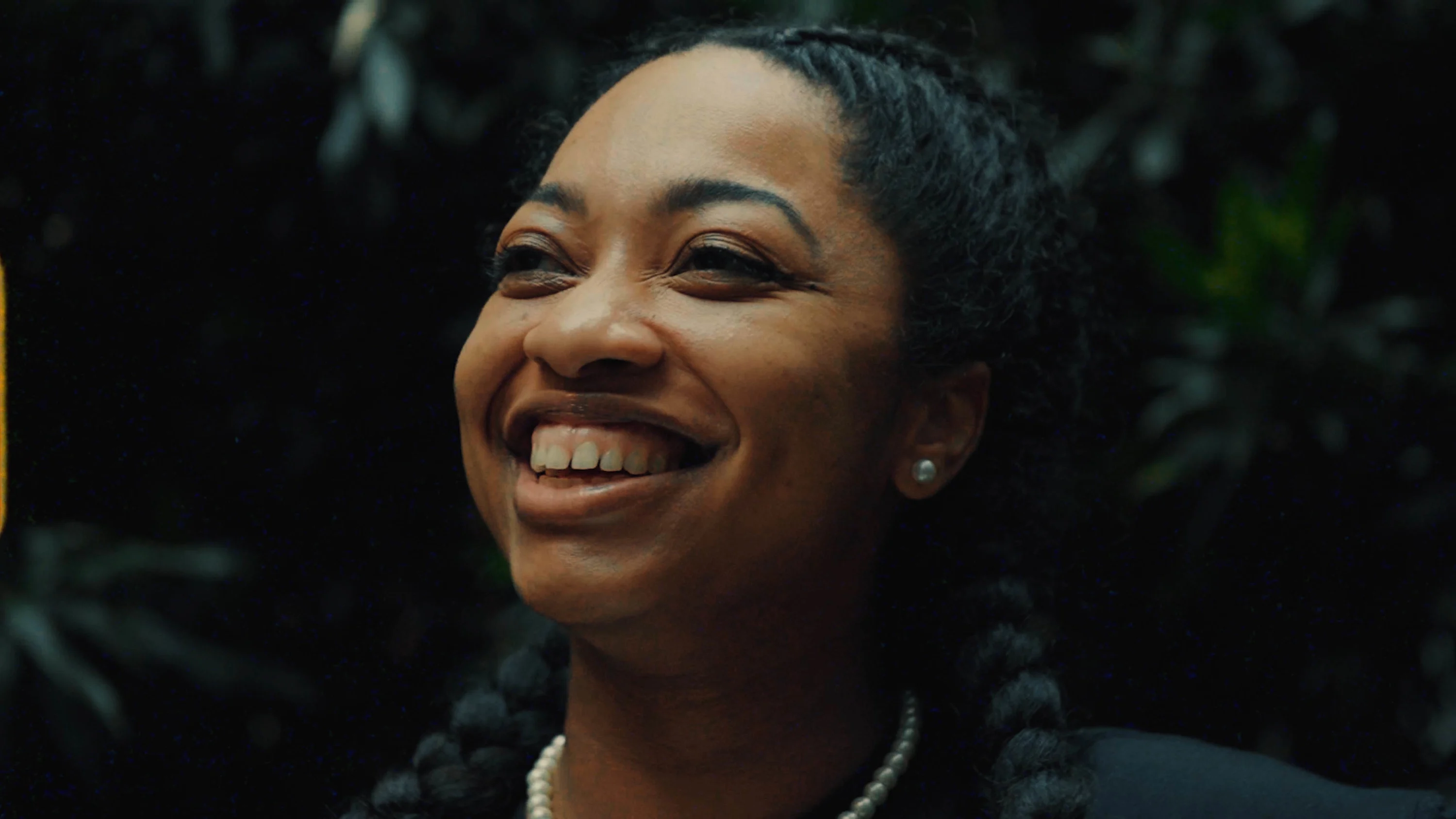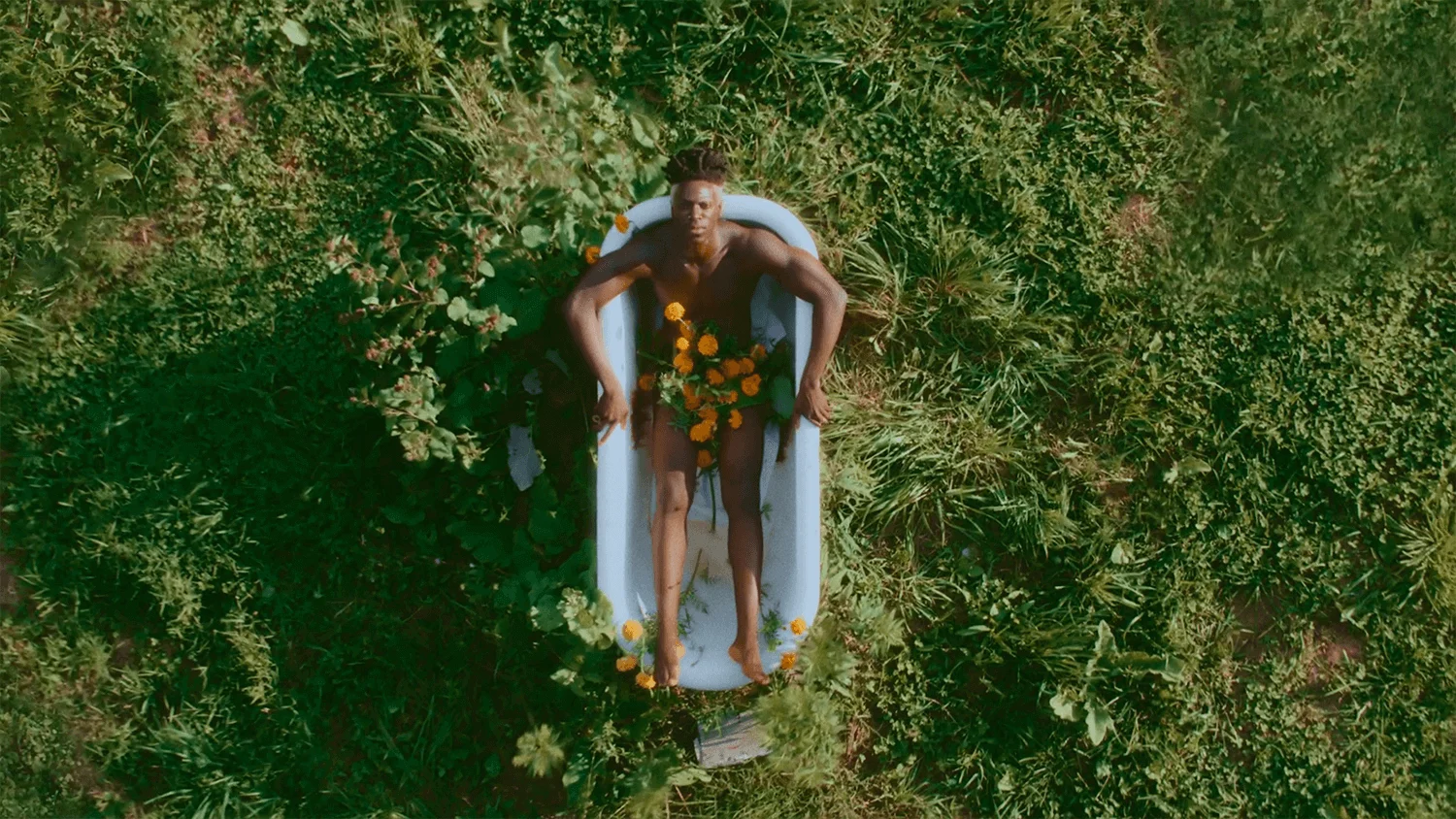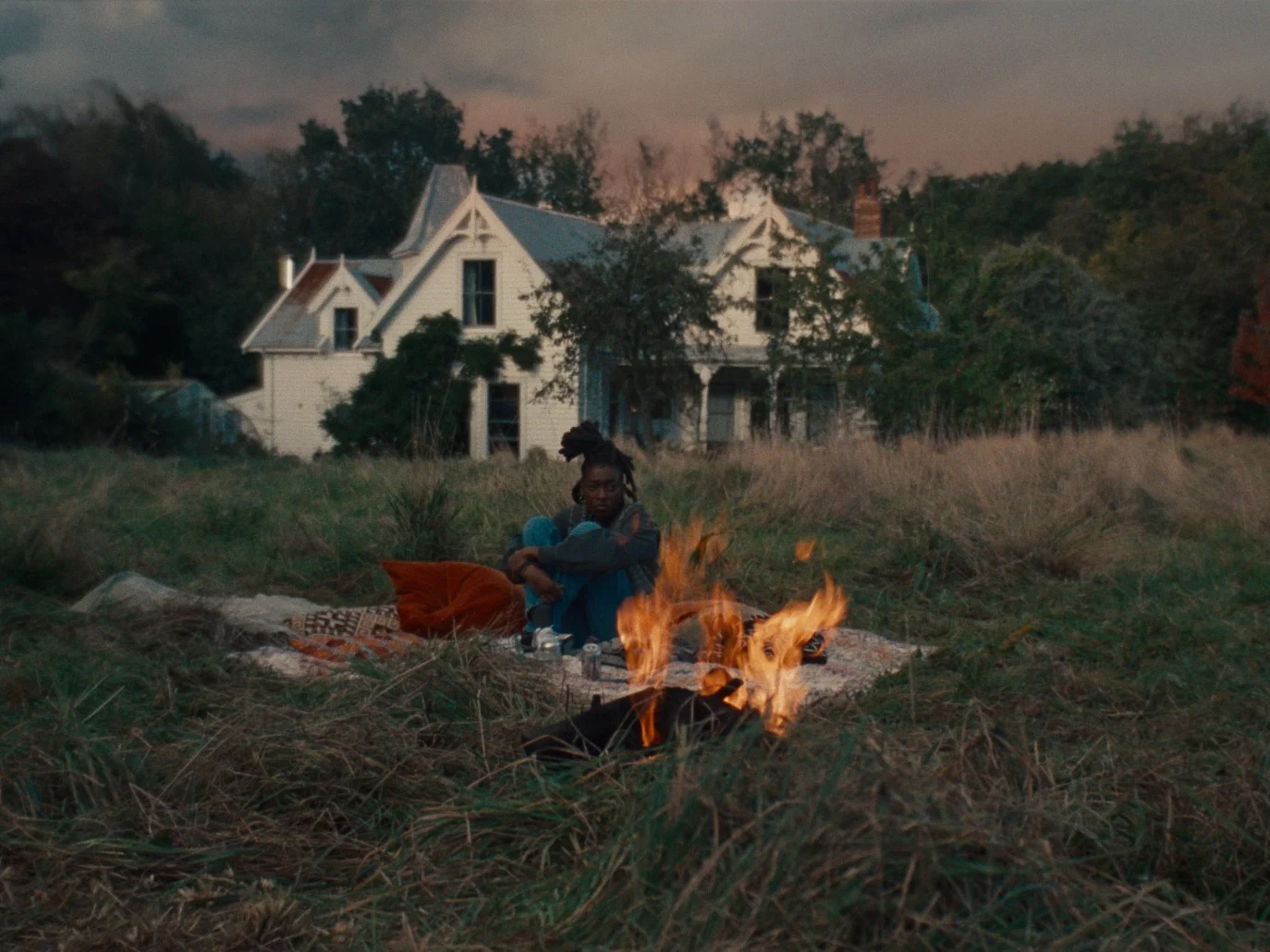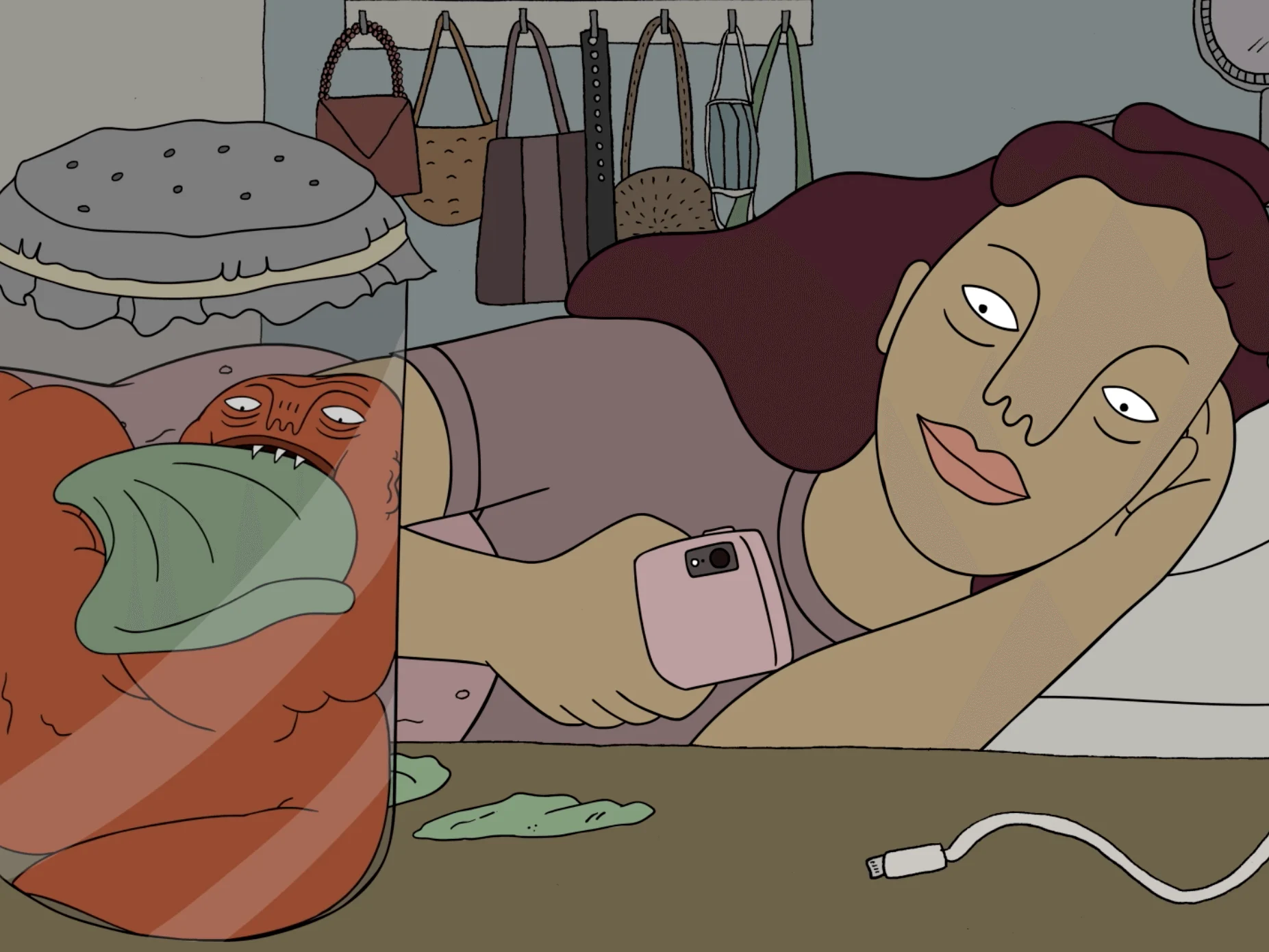
Black Corporeal (Between This Air) is a short, WePresent-commissioned film created by interdisciplinary poet from Sierra Leone Julianknxx, invoking the essence of two of his most arresting poems, This Air and Can’t Breathe. The film is a metaphysical exploration of breath, filmed in lockdown 2020 in the Barbican Conservatory. Writer Simran Hans meets Julianknxx to talk about the making of this extraordinary and timely film project, and the deeper themes at play in his work.
Photography by Aiden Harmitt-Williams.

The revelation is in your chest. The words ricochet around the room, a tinny echo bouncing off the conservatory's concrete walls. It is a cold, damp afternoon in December, but the inside of the Barbican Conservatory is glowing a hot neon red. So red, in fact, that some of the residents of the London housing estate have started to complain about the shimmering brightness. The artist Julian Knox (Julianknxx) is positioned behind the camera and wearing a bucket hat, giving him the look of an explorer, which is fitting, given the rainforest setting. Amidst the foliage, contemporary dancers Rhys Dennis and Waddah Sinada (performing as FUBUNATION) weave their torsos together, almost merging their two bodies into a single, breathing entity. “The revelation is in your chest,” says Julianknxx’s voice, the recording playing off someone’s phone. According to the Oxford English Dictionary, “revelation” can be defined as the moment when something that was once secret has been made known. In the scene, Rhys and Waddah’s chests cave in with the weight of this.

Commissioned by WePresent, Julianknxx’s short film Black Corporeal (Between This Air) is an exploration of breathing, and is an excerpt of his longer art piece of the same name, which will be screened in galleries throughout the year. Breathing, he writes in an artists’ statement, is “more than our lungs’ ability to take in air, but a reflection of the way we live, individually and together.” Air pollution, stress, anxiety, and the seam of prejudice that runs through society all present challenges to the ability to exhale-something so often taken for granted. The artist wonders if Black structures might allow Black people to reposition themselves so they might actually breathe freely.
Both versions of the film follow the search for a safe place to draw breath – no straightforward task, in a world where Black people are being suffocated at the hands of the police. The film is a metaphysical exploration of breath, and stars a British actress Sophia Brown (Giri/Haji) and an eight-piece chorus, as well as contemporary dancers FUBUNATION. Sophia appears wrapped in turquoise tulle, plastic headpiece suffocating her, body vibrating and shuddering into overdrive. “Find the spaces that allow you to breathe deeply,” reads an intertitle. Sophia is released from her plastic prison. She lies flat on her back, hair in braids, stripped of make-up. Next to her is a young man. They inhale, and exhale. In an extended version, they stand facing one another, palm-to-chest. Their breath steadies and slows.
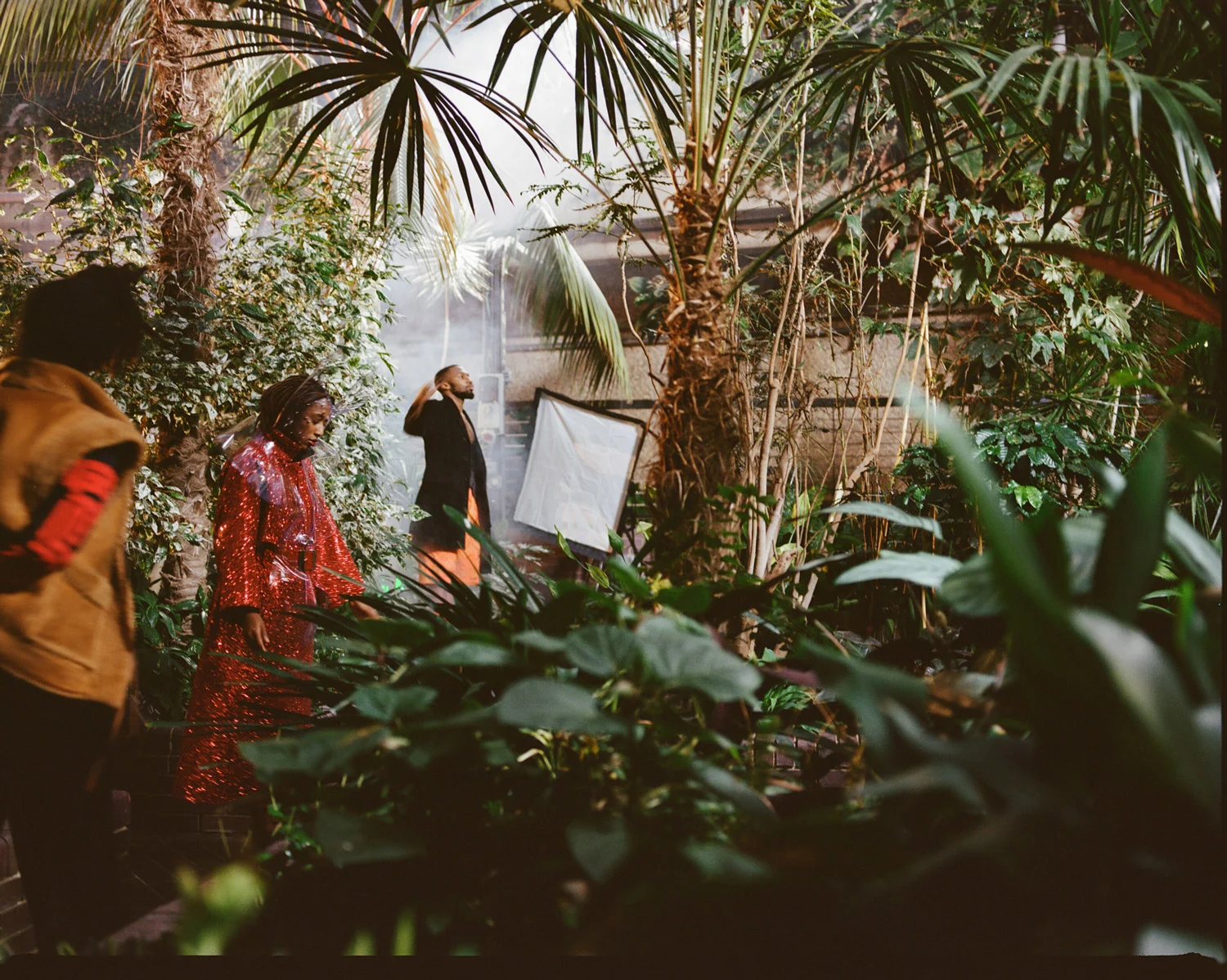
The short film invokes two of Julianknxx’s poems; This Air and Can’t Breathe. The latter was written in 2016 after the passing of Eric Garner, the poem’s title is a tribute to his final words. He had decided not to release it. “I recorded the demos, but I didn’t do anything with them,” Julianknxx says over Zoom. “It just did not feel right at the time,” he recalls. “Everyone was releasing a version of their grief. I thought, let me hold this. I didn’t want to put it out online for the sake of it.” Fast forward four summers and the death of George Floyd in May 2020 sparked a fresh wave of protest in the global fight for Black liberation. “The same thing has happened again,” says Julianknxx. George’s last words were also “I can’t breathe.”
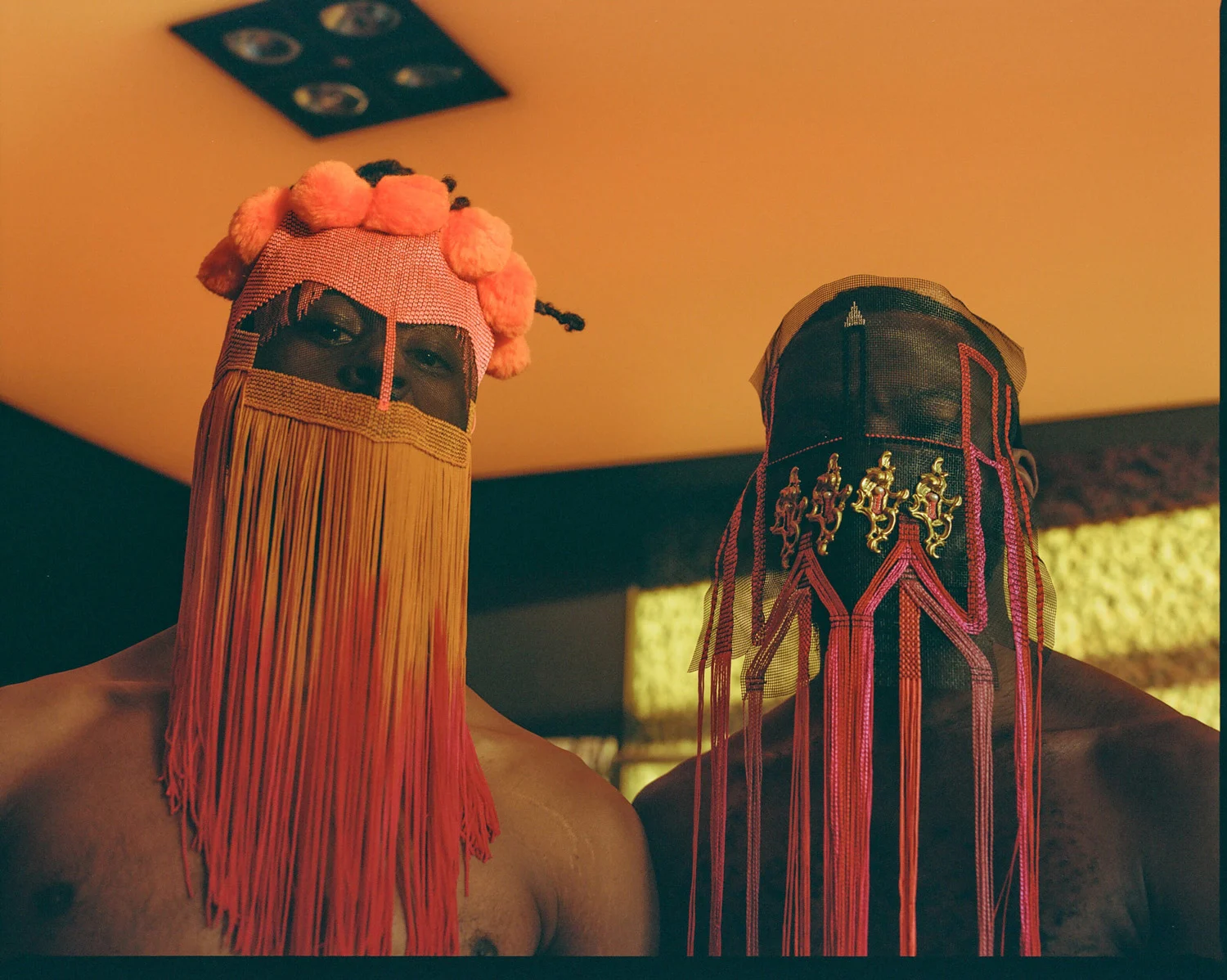
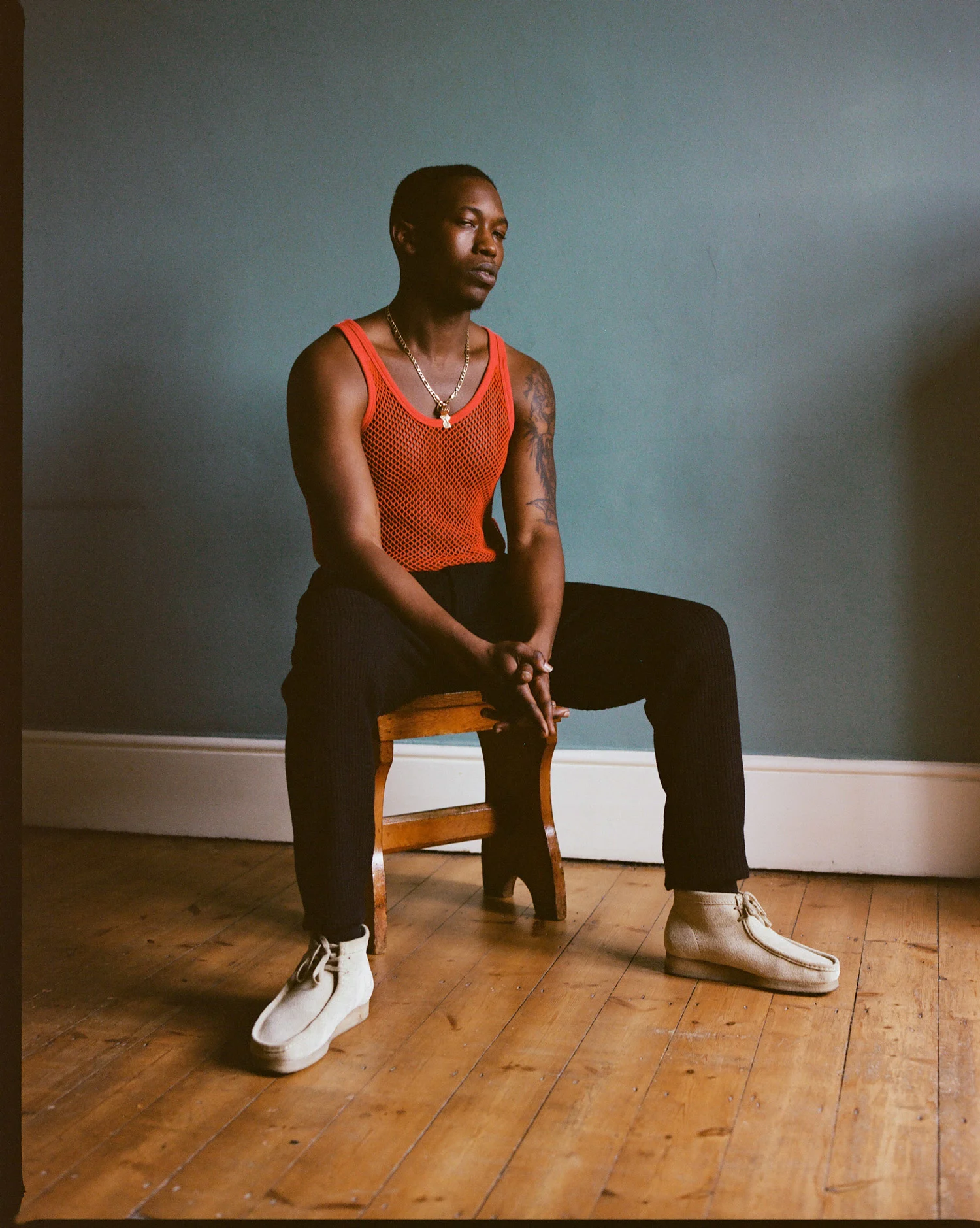
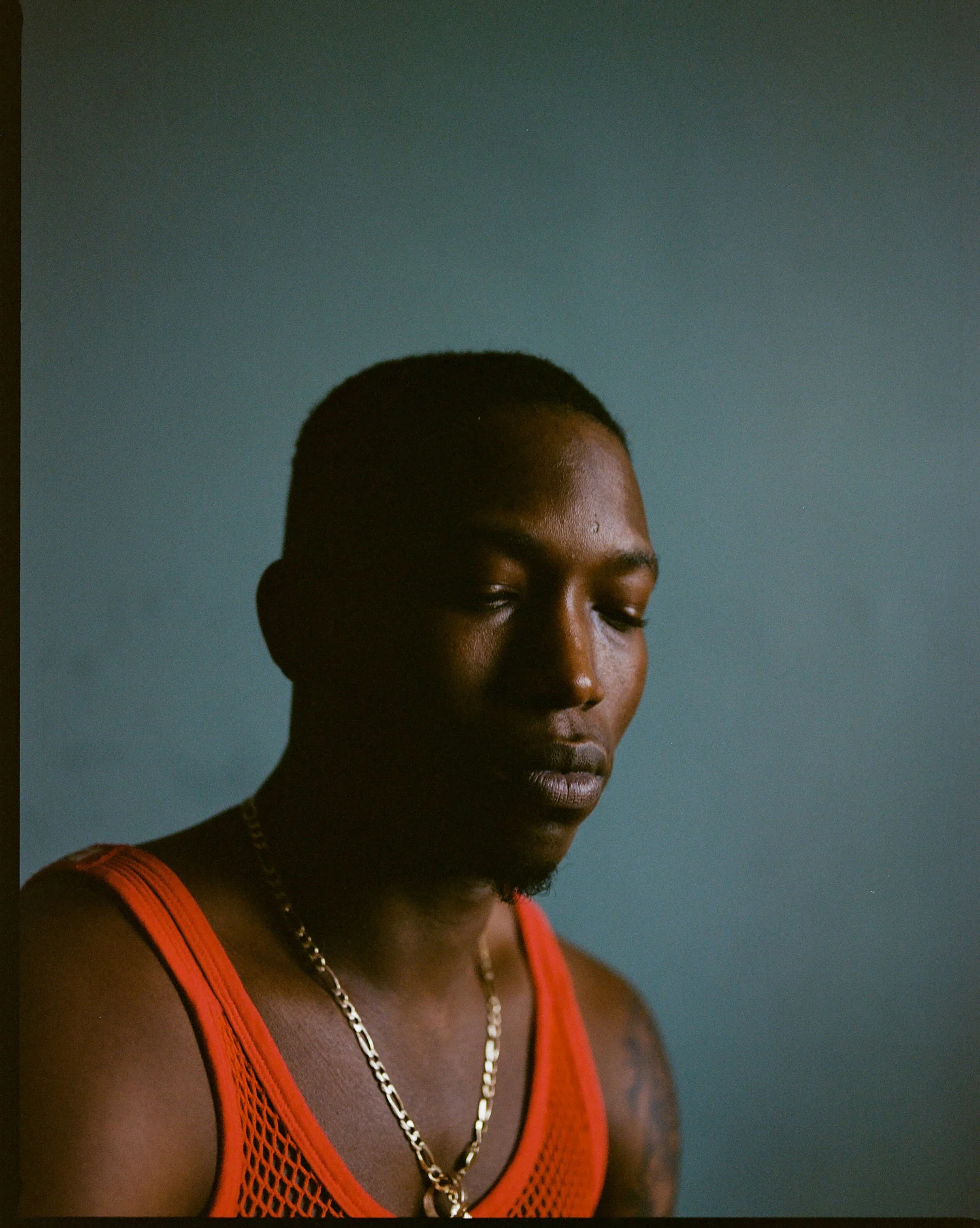
I’ve got two daughters, and I want them to see all the ways in which Black bodies can exist.
In the longer version of the film, which will be exhibited at Sadie Coles HQ and The Whitechapel Gallery in London later this summer, Julianknxx also invokes other voices. Audio from an interview with Ellah P. Wakatama hears the editor-at-Large at Canongate Books and the founding Publishing Director of The Indigo Press describe “a violence” and “an erasure that goes beyond the killing of particular bodies.” For her, it’s an act of resilience to say “I am still breathing. I am still here.”
As part of Julianknxx’s wider project, the artist is creating a “living oral archive of the thoughts and perspectives of my community of artists, writers, thinkers and elders” like Wakatama and Jason Jules, whose voice also appears in the film. The Griot – the West African tradition of oral storytelling – he says, “was and still is an integral role in West African cultures, yet this can be lost to those of us who are dislocated from the continent.” Julianknxx, who is based in London and was born in Sierra Leone, has spent several years creating a body of work under the banner Black Corporeal. A reflection on the interior life of the global Black diaspora, it takes the body as its starting point.

"I've always had a problem with the term 'Black bodies.’ We're not just bodies," says writer and editor Jules, over an image of Sophia dancing in a darkened hallway. It was important for Julianknxx to include Jules’ provocation. “For me,” Julianknxx says, “Jason articulates a tension that many black artists face. How do we talk about our collective experiences without abstracting or essentializing us as individuals? My series Black Corporeal is about exploring the fullness of our lives through our bodies. To paraphrase Ta-Nehisi Coates, 'my spirit is my flesh.’”
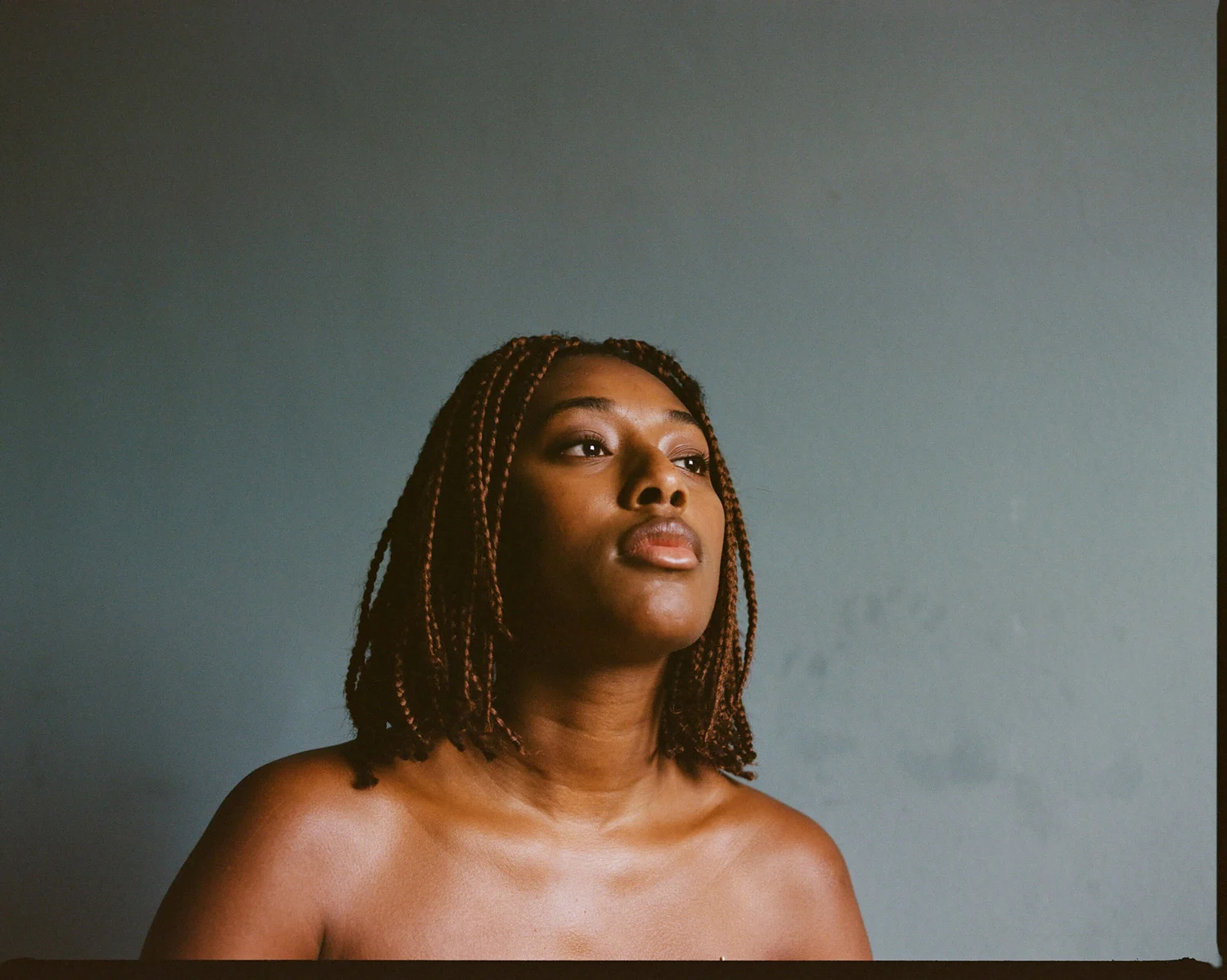
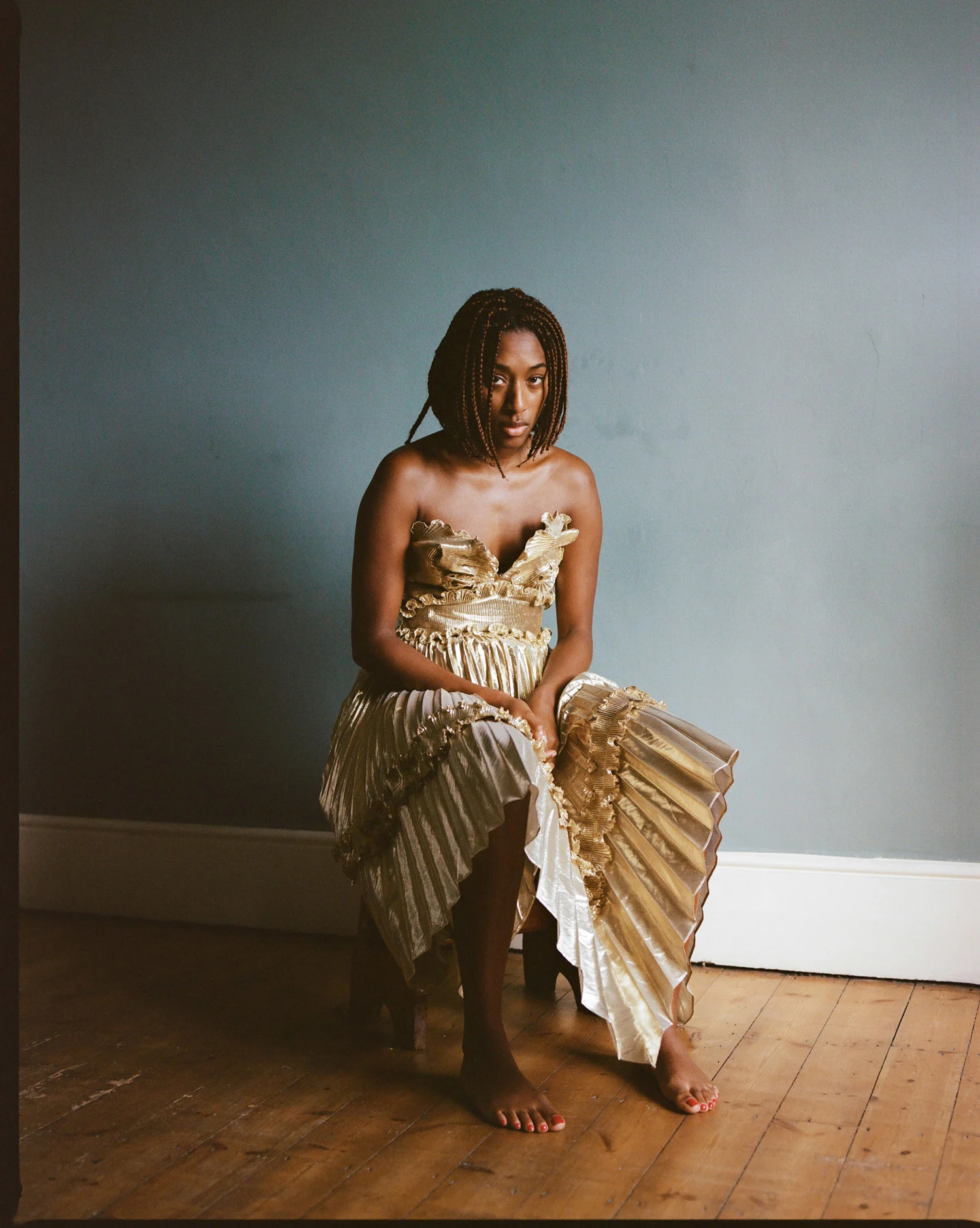
Black Corporeal is about exploring the fullness of our lives through our bodies.
Indeed, the film opens with a line from Ta Nehesi-Coates 2015’s essay Between the World and Me: I believed, and still do, that our bodies are our selves, that my soul is the voltage conducted through neurons and nerves, and that my spirit is my flesh. “I really like that, the soul being the conductor of life,” he says. The indivisibility of body and spirit is key to Julianknxx’s theory of the Black Corporeal. If something can be abstracted, it can be dehumanized. Julianknxx’s project attempts to do the opposite. His emphasis on the body is an assertion of its humanity. The artist feels similarly about the relationship between the body and the natural world. “You can’t separate the two. The more I study and research into the Black body, I’m like, bun this fantasy shit. We exchange breath with trees, nature and plants. I find that really powerful. Breathing is so intrinsic to our day to day lives that we take it for granted.” Hence Black Corporeal (Between This Air)’s lush, green setting.
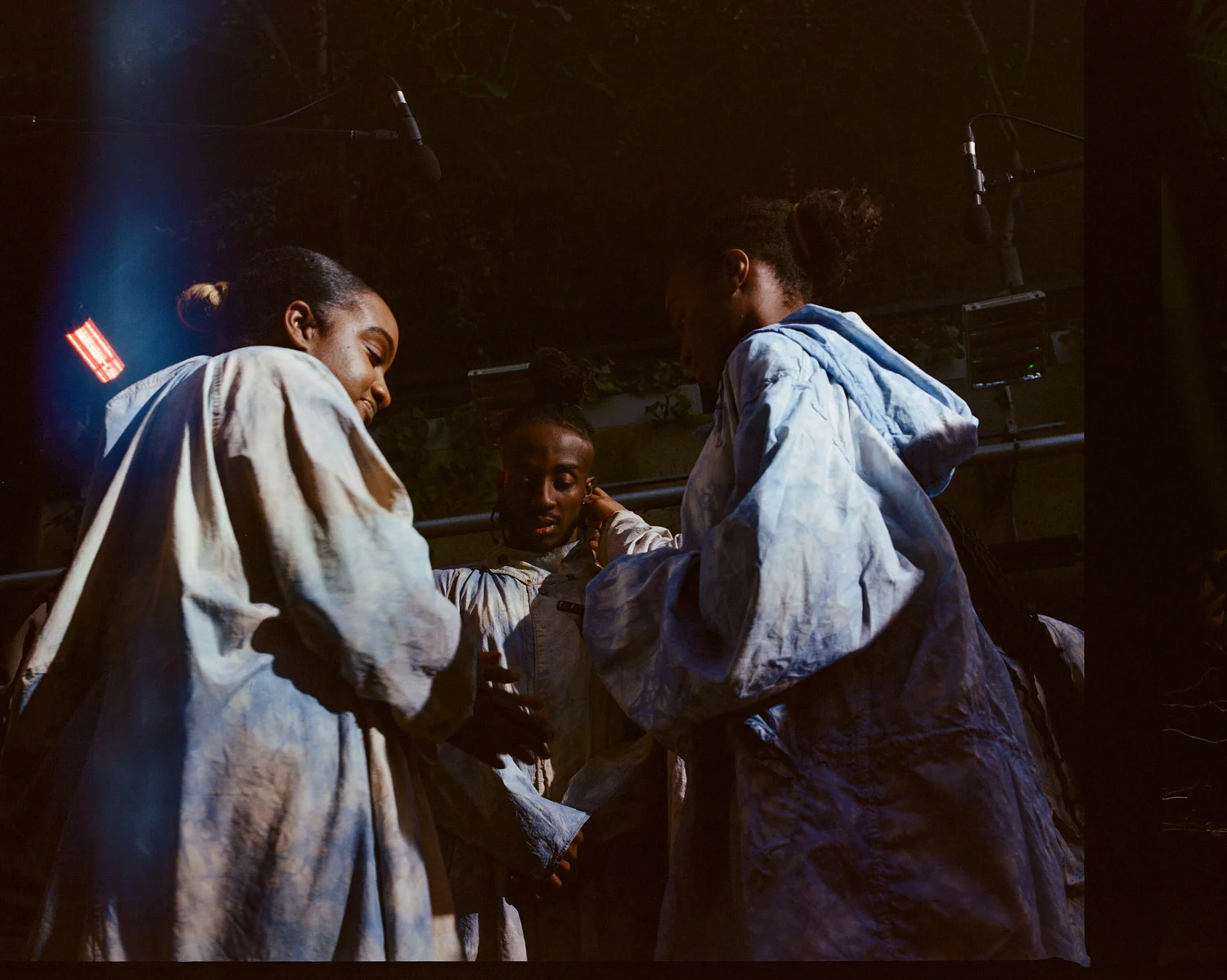
Everyone was releasing a version of their grief. I thought, let me hold this. I didn’t want to put it out online for the sake of it.
Julianknxx cites an ongoing discussion about environmentalism’s racist history and the whiteness of green spaces. It pissed him off. “I was like, what do you mean Black people don’t hang around nature? It’s a Western perspective. I was like, I just came back from Sierra Leone, everyone lives in nature. That’s our day-to-day.” The beauty of Sierra Leone’s landscape can be seen in Julianknxx’s short film In Praise of Still Boys. He describes the dense, green foliage of the rainforest, the pale expanse of sandy beach, the endless stretch of turquoise ocean, the dry season’s red dirt. “There's this idea that city life is superior to the outdoors. We build these fancy buildings, put beautiful things in them, and then we put a little bit of plant, or a little bit of garden somewhere,” he says. It’s not enough. The built environment is its own capitalist nightmare. “It’s wealth, but it’s also decay. It’s death. You have to kill something to make this,” he says, gesturing at the concrete floor of his office. “Concrete is a dead thing, it’s not breathing, it’s not wood, it doesn’t rot. We tarmac the floors, so that human bodies can move quicker and perform quicker. We become machines in the city. In Sierra Leone, people aspire towards this Western notion of life, but day-to-day, most people are very close to the earth.” Both films reasserts the idea of green spaces – and fresh, breathable air – as a universal human right. It feels even more potent then, that its setting, the Barbican conservatory, is an oasis in a Brutalist concrete jungle.
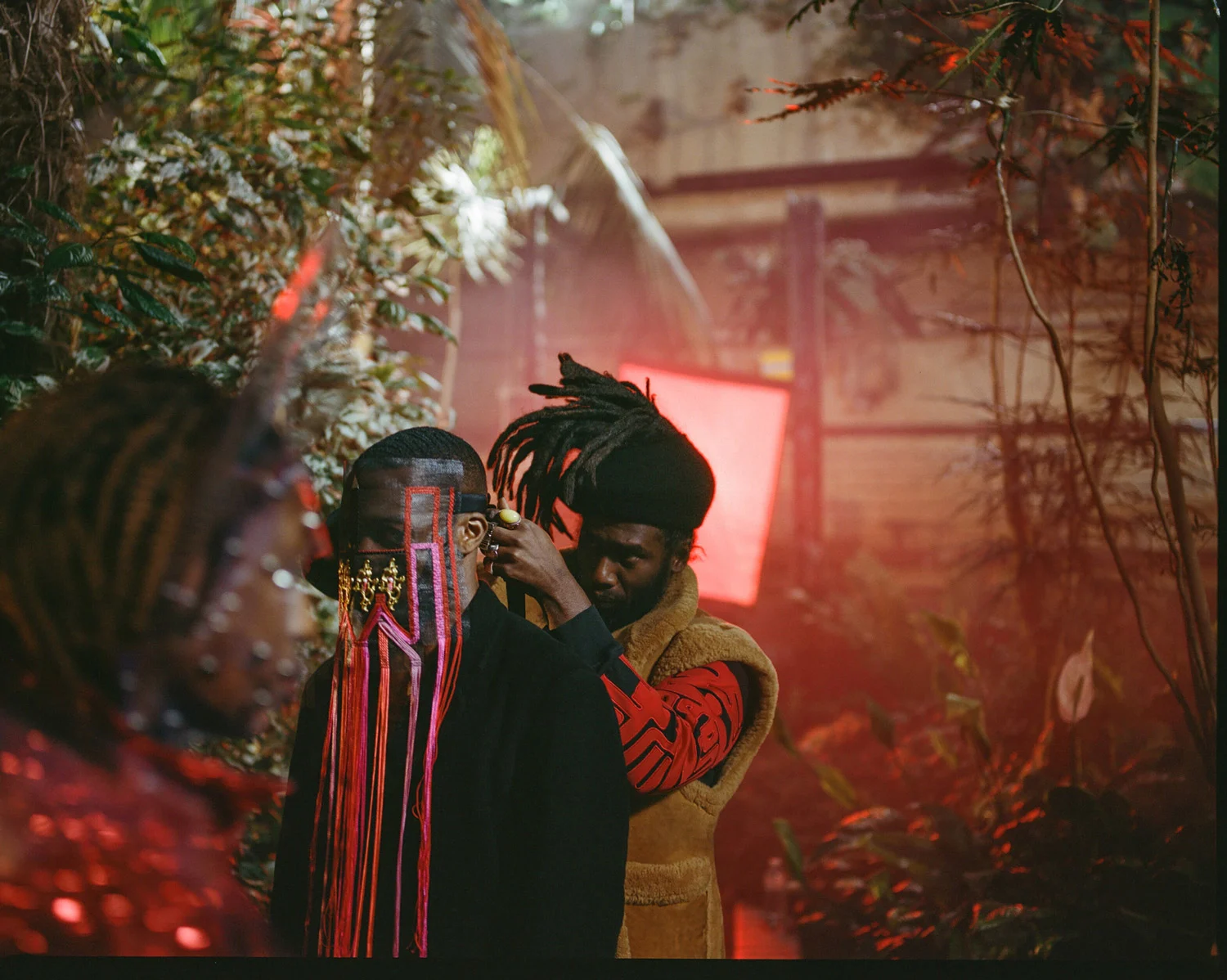
I wanted to go spiritual. To take people to church. I wanted to go inward.
One of the most powerful scenes in Black Corporeal (Between This Air) features a gospel chorus. “I wanted to go spiritual. To take people to church. I wanted to go inward,” says Julianknxx. “The interior world that we each inhabit is too massive. It’s big. It’s expansive. I needed to shoot it like, widescreen, with bare choir,” he laughs. The composition was inspired by the Haitian-American painter Francks Décéus. In one of his paintings, a mass of people stand against an orange backdrop, looking upwards towards the sky. He thought it would be a good way to stage the choir. “Look at it, I saw communion. I saw people longing for something,” he says, describing the image. “I was going to say, it's not the Lord's work,” he says, hesitant to make an explicit connection. “But maybe it is.”
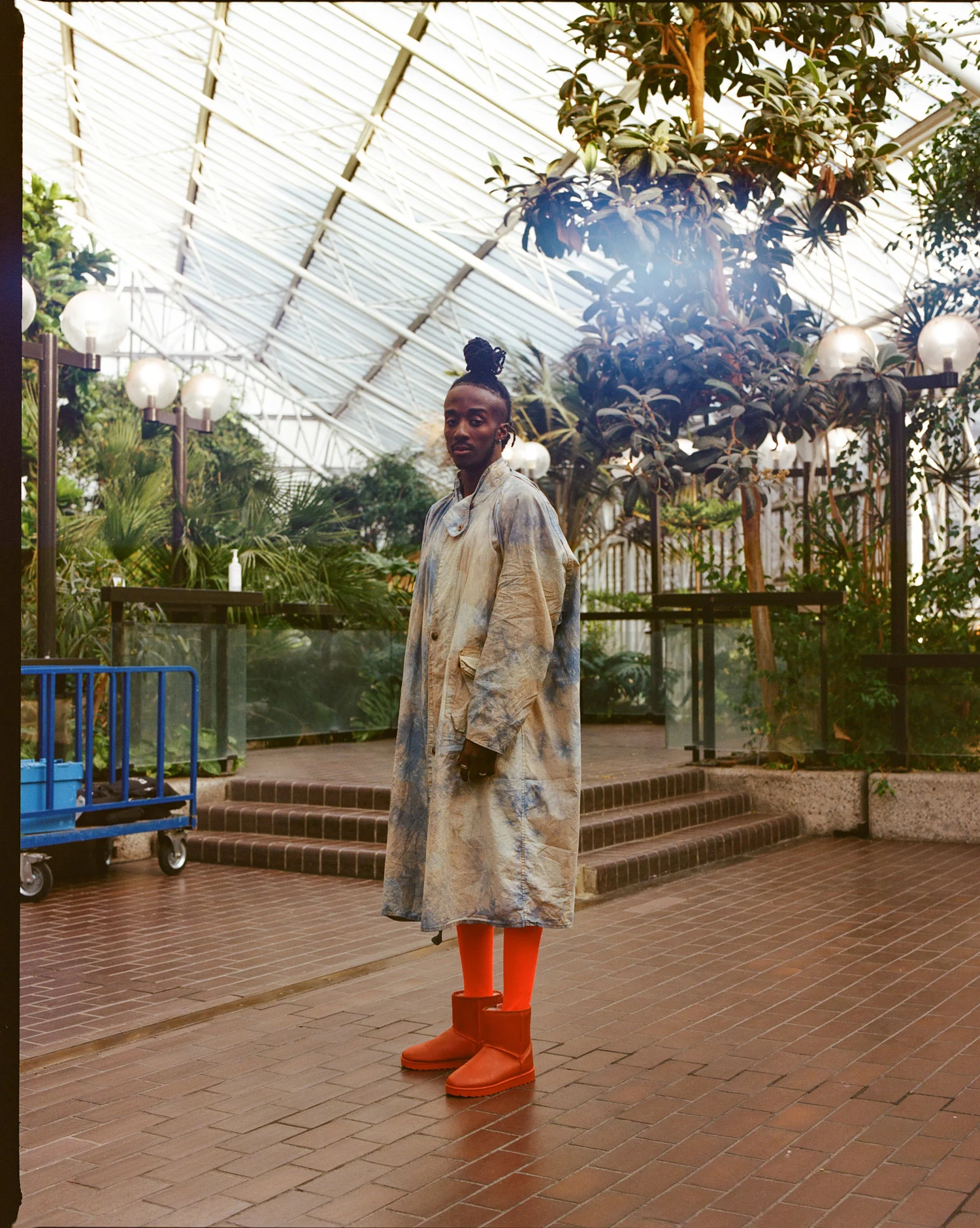
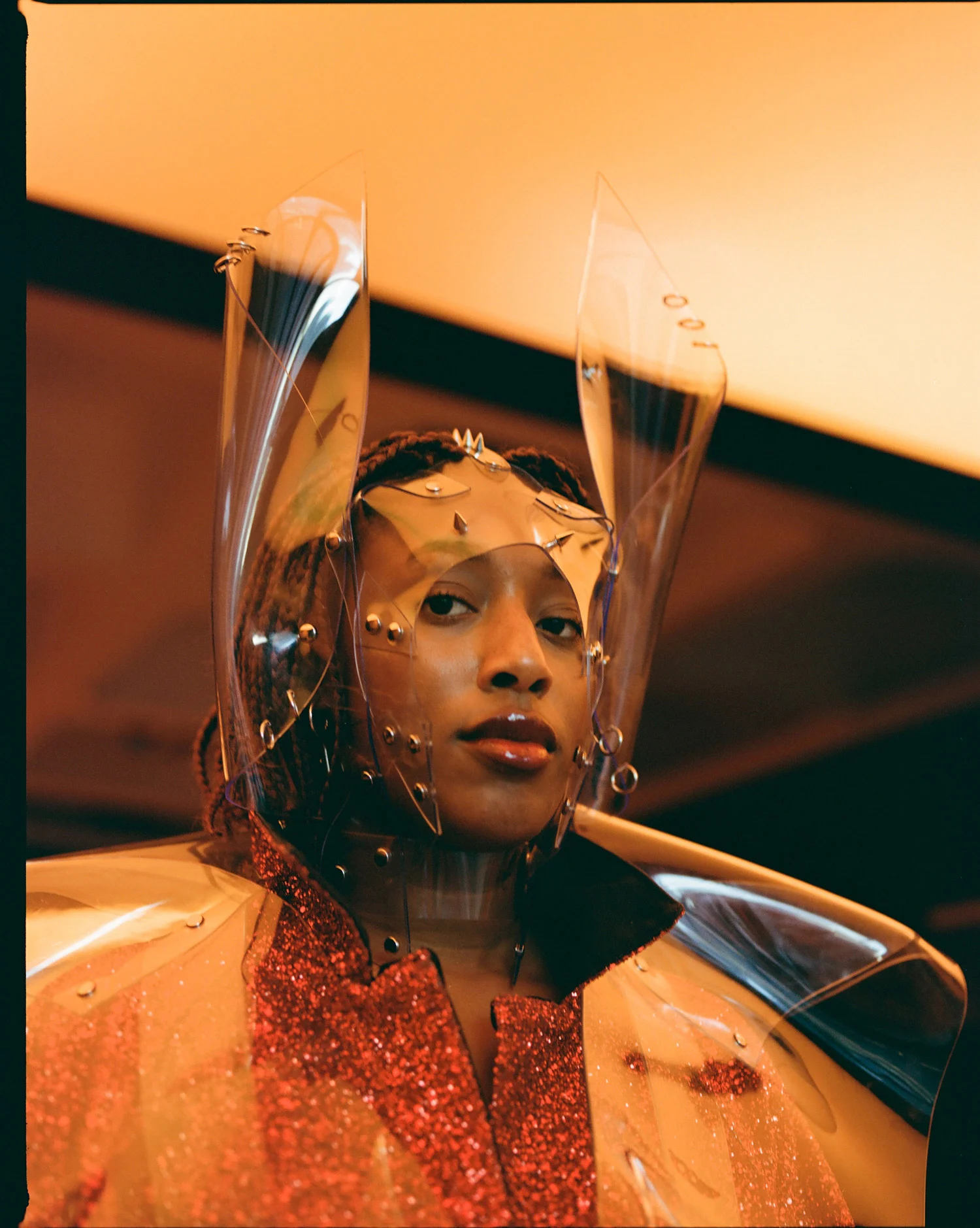
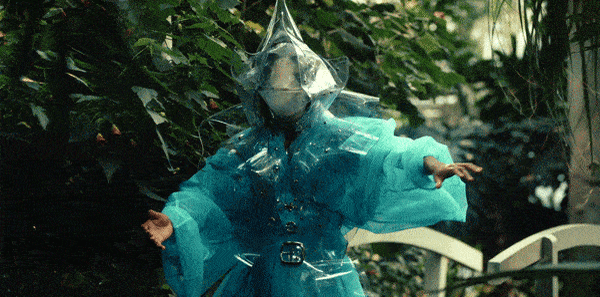
I needed to shoot it widescreen, with bare choir.
Julianknxx’s poem, film and performance are interested in collective breath – in the group inhale when something shocking occurs, and the collective exhale afterwards. It’s no coincidence that his original poem was ignited by a collective political movement. “We live in a world where COVID-19 is a thing. Gathering is a problem. Breathing is a problem.” He hopes Black Corporeal (Between This Air) will inspire some kind of collective reflection. “If there’s a way we can participate in something like this together, then yeah. Something would’ve been achieved.”

The full gallery version of Black Corporeal (Between This Air) is exhibited throughout June 2021 in the view from there exhibition by Sadie Coles HQ in London and from 3 June to 28 November 2021 in the Contra La Raza [Against Race] exhibition at Matadero Madrid.


